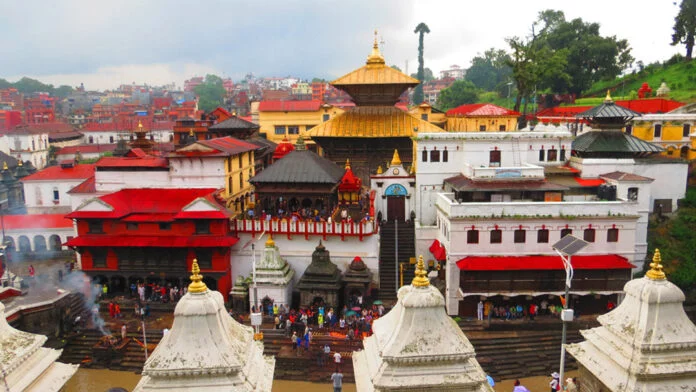
Nestled on the banks of the Bagmati river in Kathmandu, the Pashupatinath Temple is one of the most revered Hindu temples in Nepal. This ancient temple complex is a UNESCO World Heritage site and is considered one of the most significant places of worship for Hindus worldwide. In this blog, we’ll explore the history, location, timings, and facts about this magnificent temple.
History
The Pashupatinath Temple has a rich history that dates back to the 5th century. The temple was built during the Licchavi dynasty’s reign, and it has since undergone several renovations and additions. However, the exact origin of the temple remains shrouded in mystery. According to Hindu mythology, the temple’s site is where Lord Shiva once took the form of a deer and performed his divine dance. Later, a Linga (a representation of Lord Shiva) was discovered at the site, and the temple was built around it.
Location
The Pashupatinath Temple is located in the capital city of Nepal, Kathmandu. The temple complex sprawls over an area of 246 hectares and is situated on the banks of the Bagmati river. It is easily accessible from the city center and is a popular destination for both tourists and locals.
Timings
The temple is open from 4:00 AM to 7:00 PM. However, the timings may vary on special occasions and festivals. Visitors can take part in the daily Aarti (worship ritual) that takes place twice a day, once in the morning and once in the evening. The temple also hosts several festivals throughout the year, including the Maha Shivaratri, Teej, and Bala Chaturdashi.
Facts
- The Pashupatinath Temple is one of the 12 Jyotirlingas (a sacred stone representing Lord Shiva) in India and Nepal.
- The temple complex comprises several smaller temples, shrines, and ashrams, and is a hub of religious and cultural activity.
- The temple is renowned for its elaborate and intricate woodcarvings and architecture, which date back several centuries.
- The temple is also home to several Sadhus (Hindu holy men), who live in the temple complex and devote their lives to Lord Shiva.
- The Bagmati river, which flows adjacent to the temple, is considered sacred by Hindus, and many cremation ceremonies take place on its banks.

